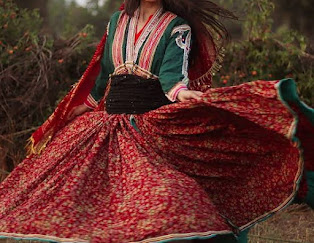In Father's Presence
Father was standing in the small courtyard, wearing a dhoti and banian...
We thought we would talk about dresses and costumes unique to our home and place; Pestalozzi Children's Village students shared their reflections:
Kanika Dogra is from Himachal Pradesh in India, and she writes, I'm from Himachal Pradesh, where men wear kurta pyjamas and caps; and women wear churidar pyjamas or salwar with kameez and dupatta. Himachali caps represent cultural identity; people in our community consider the cap a symbol of pride. like turbans for siks in Pujab. In Himachal, we have many different types of national costumes.Tenzin Lhadon shared the Tibetan National Dress.
Tenzin Dhekyong
Reflections from Pestalozzi Childrens' Village, India







